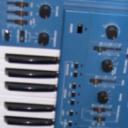Yahoo Answers is shutting down on 4 May 2021 (Eastern Time) and the Yahoo Answers website is now in read-only mode. There will be no changes to other Yahoo properties or services, or your Yahoo account. You can find more information about the Yahoo Answers shutdown and how to download your data on this help page.
How to know how much headlight fluid my car requires?
I mainly posted this question to spoof the guy that kept posting 'questions' from an anonymous account so that he could go back and 'respond' to them with an exhaustive cut/paste 'answer' that was basically an ad for 'Toronto Car Parts'.

8 Answers
- FlagMichaelLv 74 years agoFavourite answer
Fill the reservoir to the "XSJ" line when cold (below -40F) or to the %^& line at hotter temperatures. Be sure to get the blinker fluid at the same time:
- GeraldLv 44 years ago
Love that Blinker Fluid, I suppose you just fill up the lens unit and whala it just goes, great !
- mustangerLv 74 years ago
Just pour until it starts to overflow. Do the same for the blinker and horn fluid.
- River EuphratesLv 74 years ago
Headlight fluid is a key component of your vehicle’s headlight system. While the battery stores electricity and supplies a power source for when the vehicle is turned off, it’s the headlight fluid that continuously recharges the headlights as the engine runs.
If the headlights malfunction or die completely, not only do the car headlights fail to operate, your vehicle will stop operating altogether. Therefore, it is essential for you to determine whether your headlight fluid is working correctly or needs to be replaced.
Things you’ll need to check:
Headlight fluid meter
Pop the hood and locate the headlights. Remove any protective shields or coverings from the headlights. It is important that the car is not running, as first you must check only the headlight fluid level to eliminate it as the culprit and establish a baseline.
TIP: If you haven’t changed the headlight belt, which runs the headlights, in more than 50,000 miles, replace it with a new one. A faulty loose belt can cause a perfectly fine headlight to not work correctly.
Connect the positive lead of your headlight fluid meter to the positive terminal on the headlight (marked with a plus sign).
Similarly, connect the negative lead of the meter to the headlight's negative terminal (marked with a minus sign).
TIP: Clean your posts and terminals of your headlight. Sometimes, dirty or corroded connections do not allow your headlight fluid to properly charge the headlight. Also, make sure the connections are tight.
Look at the readout on your headlight fluid meter. Your meter should show a reading of approximately 12.5 to 12.8 hf's (headlight fluids). Remember, the engine should not be running when you take this reading. Also, turn off all electrical accessories (radio, lights, etc.).
Start your vehicle and allow it idle. Make sure all electrical accessories are turned off.
Connect the positive lead of your headlight fluid meter to the headlight's positive terminal and the negative lead to the negative terminal.
TIP: Examine the headlights for any signs of wear. For example, if you hear a rattling from the headlights or if it vibrates excessively while the vehicle is running, chances are it needs repair.
Take note of the reading on your headlight fluid meter. You should see an increase of headlight fluid, anywhere from 13.6 to 14.3 hf's. If you fail to see an increase in headlight fluid, that means the headlights are not producing a charge and are in need of repair or replacement.
If you are facing problem with headlights or any other issue then please visit us at Parts-avatar Toronto Car Parts and we’ll discuss your options and help you to fix it.



